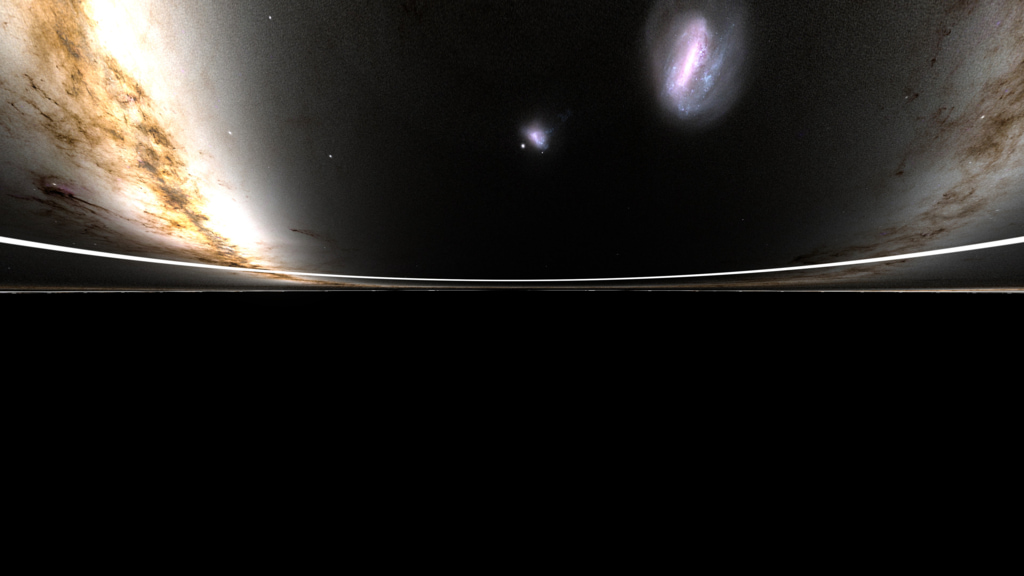Hyperwall Power Playlist - Astrophysics Focus
Overview
This is a collection of our most powerful, newsworthy, and frequently used Hyperwall-ready visualizations, along with several that haven't gotten the attention they deserve. They're especially great for more general or top-level science talks, or to "set the scene" before a deep dive into a more focused subject or dataset. We've tried to cover the subject areas our speakers focus on most.
If you're not seeing what you're looking for, there is a huge library of visualizations more localized or specialized in subject - please use the Search function above, and filter "Result type" for "Hyperwall Visual."
![]() If you'd like to use one of these visualizations in your Hyperwall presentation, we'll need to know which element on which page. On the visualization's web page, below the visual you'd like to use, you'll see a Link icon next to the Download button. All we need is for you to click on that icon and include that link in your presentation Powerpoint/Keynote or visualization list. Additionally, please check our Hyperwall How-To Guide for tips on designing your Hyperwall presentation, file specifications, and Powerpoint/Keynote templates.
If you'd like to use one of these visualizations in your Hyperwall presentation, we'll need to know which element on which page. On the visualization's web page, below the visual you'd like to use, you'll see a Link icon next to the Download button. All we need is for you to click on that icon and include that link in your presentation Powerpoint/Keynote or visualization list. Additionally, please check our Hyperwall How-To Guide for tips on designing your Hyperwall presentation, file specifications, and Powerpoint/Keynote templates.
Science Mission Directorate and General Astrophysics
- Hyperwall Visual
- Hyperwall Visual
- Hyperwall Visual
- Visualization
- Hyperwall Visual
- Gallery
- Section
- Visualization
- Produced Video
- Produced Video
- Infographic
- Produced Video
Webb Space Telescope (JWST)
- Hyperwall Visual
- Hyperwall Visual
- Hyperwall Visual
- Hyperwall Visual
- Hyperwall Visual
- Hyperwall Visual
- Hyperwall Visual
- Hyperwall Visual
- Hyperwall Visual
- Hyperwall Visual
- Hyperwall Visual
- Hyperwall Visual
- Hyperwall Visual
- Hyperwall Visual
- Hyperwall Visual
- Hyperwall Visual
- Hyperwall Visual
- Produced Video
- Hyperwall Visual
- Animation
- Produced Video
- B-Roll
- Hyperwall Visual
- Hyperwall Visual
- Hyperwall Visual
- Animation
Hubble Space Telescope (HST)
- Hyperwall Visual
- Hyperwall Visual
- Hyperwall Visual
- Hyperwall Visual
- Hyperwall Visual
- Hyperwall Visual
- Hyperwall Visual
- Produced Video
- Produced Video
- Hyperwall Visual
- Hyperwall Visual
- Hyperwall Visual
- Produced Video
- Hyperwall Visual
- Hyperwall Visual
- Hyperwall Visual
- Hyperwall Visual
- Hyperwall Visual
- Hyperwall Visual
- Produced Video
- Hyperwall Visual
- Hyperwall Visual
- Hyperwall Visual
- Hyperwall Visual
- Hyperwall Visual
- Hyperwall Visual
- Hyperwall Visual
- Hyperwall Visual
- Hyperwall Visual
- Hyperwall Visual
- Hyperwall Visual
- Hyperwall Visual
- Hyperwall Visual
- Hyperwall Visual
- Hyperwall Visual
- Hyperwall Visual
- Hyperwall Visual
- Hyperwall Visual
- Hyperwall Visual
- Hyperwall Visual
- Hyperwall Visual
Chandra
- Hyperwall Visual
- Hyperwall Visual
- Hyperwall Visual
- Hyperwall Visual
- Hyperwall Visual
- Hyperwall Visual
- Hyperwall Visual
- Produced Video
- Hyperwall Visual
- Hyperwall Visual
- Hyperwall Visual
- Hyperwall Visual
- Hyperwall Visual
- Hyperwall Visual
- Produced Video
Spitzer
- Hyperwall Visual
- Hyperwall Visual
- Hyperwall Visual
- Hyperwall Visual
- Hyperwall Visual
- Hyperwall Visual
- Hyperwall Visual
- Hyperwall Visual
- Hyperwall Visual
- Hyperwall Visual
- Hyperwall Visual
- Hyperwall Visual
- Hyperwall Visual
- Hyperwall Visual
- Hyperwall Visual
- Hyperwall Visual
Nancy Grace Roman Space Telescope
Nancy Grace Roman Space Telescope Reaction Wheel and Thruster Animations
Go to this pageBeauty pass of Roman, coming over the top of the solar panels.Credit: NASA's Goddard Space Flight Center/CI Lab || RST_Beauty_S1_4K_60_ProRes.00458_print.jpg (1024x576) [164.9 KB] || RST_Beauty_S1_1080.mp4 [19.0 MB] || RST_Beauty_S1_4K_60.mp4 [92.2 MB] || RST_Beauty_S1_4K_60_ProRes.webm [10.4 MB] || RST_Beauty_S1_4K_60_ProRes.mov [2.0 GB] ||
Using Infrared to Survey Our Galaxy’s Far Side
Go to this pageObservatories with smaller views of space have provided exquisite images of other galaxies, revealing complex structures. But studying our own galaxy’s anatomy is surprisingly difficult. The plane of the Milky Way covers such a large area on the sky that studying it in detail can take a very long time. Astronomers also must peer through thick dust that obscures distant starlight. Infrared light can pass through that dust and is a key tool for learning about the far side of our galaxy.Credit: NASA's Goddard Space Flight CenterMusic: "Time Shift Equalibrium" from Universal Production MusicWatch this video on the NASA Goddard YouTube channel.Complete transcript available. || GalacticPlaneIR_Split_Still.jpg (1920x1080) [430.6 KB] || GalacticPlaneIR_Split_Still_searchweb.png (320x180) [103.4 KB] || GalacticPlaneIR_Split_Still_thm.png (80x40) [7.6 KB] || 14521_Galactic_Plane_Infrared_good.mp4 (1920x1080) [51.0 MB] || 14521_GalacticPlaneIR_SRT_Captions.en_US.srt [1.0 KB] || 14521_GalacticPlaneIR_SRT_Captions.en_US.vtt [1.0 KB] || 14521_Galactic_Plane_Infrared_ProRes_1920x1080_30.mov (1920x1080) [923.1 MB] || 14521_Galactic_Plane_Infrared_Best.mp4 (1920x1080) [106.4 MB] ||
Nancy Grace Roman Space Telescope Partner Maps
Go to this pageThis world map of Nancy Grace Roman Space Telescope partner institutes shows the international effort to realize this mission. Dish icons represent ground stations that will send and recieve data to the spacecraft once it is on orbit.Credit: NASA's Goddard Space Flight CenterThe Australia inset of this map was originally created by Lokal_Profil and sourced from Wikimedia Commons. || Roman_World_Partner_Map_Aug24_10k.jpg (10000x5000) [6.2 MB] || Roman_World_Partner_Map_Aug24_10k.png (10000x5000) [12.6 MB] || Roman_World_Partner_Map_Aug24_5k.jpg (5000x2500) [2.4 MB] || Roman_World_Partner_Map_Aug24_5k.png (5000x2500) [6.0 MB] || Roman_World_Partner_Map_Aug24_5k_print.jpg (1024x512) [196.1 KB] || Roman_World_Partner_Map_Aug24_5k_searchweb.png (320x180) [79.6 KB] || Roman_World_Partner_Map_Aug24_5k_thm.png (80x40) [5.7 KB] || Roman_World_Partner_Map_Aug24_10k.png.dzi [179 bytes] || Roman_World_Partner_Map_Aug24_10k.png_files [4.0 KB] ||
Why NASA's Roman Mission Will Study Milky Way's Flickering Lights
Go to this pageWatch this video to learn about time-domain astronomy and how time will be a key element in the Nancy Grace Roman Space Telescope's galactic bulge survey.Music: "Elapsing Time" and "Beyond Truth" from Universal Production MusicWatch this video on the NASA Goddard YouTube channel.Complete transcript available. || Roman_TDA-GBS_Still.jpg (1920x1080) [716.0 KB] || Roman_TDA-GBS_Still_print.jpg (1024x576) [206.4 KB] || Roman_TDA-GBS_Still_searchweb.png (320x180) [95.5 KB] || Roman_TDA-GBS_Still_thm.png (80x40) [7.0 KB] || 14438_Roman_TimeDomain_GalacticBulgeSurvey_Sub100.mp4 (1920x1080) [91.9 MB] || 14438_Roman_TimeDomain_GalacticBulgeSurvey_Good.webm (1920x1080) [32.2 MB] || 14438_Roman_TimeDomain_GalacticBulgeSurvey_Good.mp4 (1920x1080) [215.7 MB] || 14438_Roman_TimeDomain_GalacticBulgeSurvey_Best.mp4 (1920x1080) [744.2 MB] || 14438_Roman_TimeDomain_GalacticBulgeSurvey_Captions.en_US.srt [6.0 KB] || 14438_Roman_TimeDomain_GalacticBulgeSurvey_ProRes_1920x1080_2997.mov (1920x1080) [4.0 GB] ||
XRISM
XRISM Spots Iron Fingerprints in Nearby Active Galaxy
Go to this pageThe Resolve instrument aboard XRISM (X-ray Imaging and Spectroscopy Mission) captured data from the center of galaxy NGC 4151, where a supermassive black hole is slowly consuming material from the surrounding accretion disk. The resulting spectrum reveals the presence of iron in the peak around 6.5 keV and the dips around 7 keV, light thousands of times more energetic that what our eyes can see. Background: An image of NGC 4151 constructed from a combination of X-ray, optical, and radio light. Credit: Spectrum: JAXA/NASA/XRISM Resolve. Background: X-rays, NASA/CXC/CfA/J.Wang et al.; optical, Isaac Newton Group of Telescopes, La Palma/Jacobus Kapteyn Telescope; radio, NSF/NRAO/VLAAlt text: A XRISM spectrum of NGC 4151 with a multiwavelength snapshot of the galaxy in the background. Descriptive text: The spectrum image is labeled, “XRISM Resolve Spectrum of NGC 4151.” It shows a graph where the bottom is labeled, “X-ray energy (keV),” with a range from 5 to 9. The left side is labeled, “X-ray brightness.” A squiggly white line starts just under halfway up the left side. It peaks at just under 6.5 keV, nearly reaching the top of the graph. Then it starts to slope gently downward, with several sharp dips around 7 keV. In the background is a dim image of galaxy NGC 4151, where the center is a whiteish blue, surrounding by clouds of red and yellow. || Spectrum_v4.jpg (2300x2050) [426.6 KB] ||
XRISM Mission Captures Unmatched Data With Just 36 Pixels
Go to this pageWatch to learn more about how the Resolve instrument aboard XRISM captures extraordinary data on the make-up of galaxy clusters, exploded stars, and more using only 36 pixels.Credit: NASA’s Goddard Space Flight CenterMusic: "Stop and Hide" and "Wading Through" from Universal Production MusicWatch this video on the NASA Goddard YouTube channel.Complete transcript available. || XRISM_36_Pixels_Still.jpg (1920x1080) [959.9 KB] || XRISM_36_Pixels_Still_searchweb.png (320x180) [94.7 KB] || XRISM_36_Pixels_Still_thm.png (80x40) [7.0 KB] || 14463_XRISM_36Pixels_Good.mp4 (1920x1080) [148.9 MB] || 14463_XRISM_36Pixels_Best.mp4 (1920x1080) [514.8 MB] || 14463_XRISM_36Pixels_Captions.en_US.srt [4.6 KB] || 14463_XRISM_36Pixels_Captions.en_US.vtt [4.4 KB] || 14463_XRISM_36Pixels_ProRes_1920x1080_2997.mov (1920x1080) [2.4 GB] ||
XRISM Reveals Its First Look at X-ray Cosmos
Go to this pageXRISM’s Resolve instrument captured data from supernova remnant N132D in the Large Magellanic Cloud to create the most detailed X-ray spectrum of the object ever made. The spectrum reveals peaks associated with silicon, sulfur, argon, calcium, and iron. Inset at right is an image of N132D captured by XRISM’s Xtend instrument.Credit: JAXA/NASA/XRISM Resolve and Xtend || Resolve_N132D_Spectrum.jpg (3840x2395) [1.0 MB] || Resolve_N132D_Spectrum_searchweb.png (320x180) [45.7 KB] || Resolve_N132D_Spectrum_thm.png (80x40) [4.7 KB] ||
NICER
NICER's Night Moves
Go to this pageThis image of the whole sky shows 22 months of X-ray data recorded by NASA's Neutron star Interior Composition Explorer (NICER) payload aboard the International Space Station during its nighttime slews between targets. NICER frequently observes targets best suited to its core mission (“mass-radius” pulsars) and those whose regular pulses are ideal for the Station Explorer for X-ray Timing and Navigation Technology (SEXTANT) experiment. One day they could form the basis of a GPS-like system for navigating the solar system.Credits: NASA/NICER || NICERNightMoveslabels.jpg (3299x1650) [13.7 MB] ||
NASA's NICER Tracks a Magnetar's Hot Spots
Go to this pageExplore how NASA’s Neutron star Interior Composition Explorer (NICER) tracked brilliant hot spots on the surface of an erupting magnetar – from 13,000 light-years away. Credit: NASA's Goddard Space Flight CenterMusic: "Particles and Fields" from Universal Production MusicWatch this video on the NASA Goddard YouTube channel.Complete transcript available. || Magnetar_Still.jpg (1920x1080) [574.3 KB] || Magnetar_Still_print.jpg (1024x576) [229.0 KB] || Magnetar_Still_searchweb.png (320x180) [66.1 KB] || Magnetar_Still_thm.png (80x40) [5.2 KB] || 14115_Merging_Magnetar_HotSpots_1080_Best.webm (1920x1080) [17.4 MB] || 14115_Merging_Magnetar_HotSpots_1080.mp4 (1920x1080) [158.9 MB] || 14115_Merging_Magnetar_HotSpots_1080_Best.mp4 (1920x1080) [382.0 MB] || 14115_Migrating_Magnetar_HotSpots_1080.en_US.srt [2.1 KB] || 14115_Migrating_Magnetar_HotSpots_1080.en_US.vtt [2.1 KB] || 14115_Merging_Magnetar_HotSpots_ProRes_1920x1080_2997.mov (1920x1080) [2.1 GB] ||
NuSTAR
NASA Telescopes Chase Down "Green Monster" in Star's Debris
Go to this pageAnimations of images originally published at https://chandra.harvard.edu/photo/2024/casa/ and https://www.nasa.gov/image-article/nasa-telescopes-chase-down-green-monster-in-stars-debris/.Astronomers have combined data from NASA’s Chandra X-ray Observatory and James Webb Space Telescope to study supernova remnant Cassiopeia A (Cas A). This work has helped explain an unusual structure called the “Green Monster”. Composite images from Chandra, Webb, Hubble, NuSTAR, and Spitzer reveal where elements such as silicon, iron, and titanium are located. Comparing where certain elements are with the location of the blast wave, researchers conclude that the Green Monster was created by a blast wave from the exploded star slamming into material surrounding it. ||
Webb, Chandra, Hubble, and Spitzer Together Explore Cassiopeia A
Go to this pageFor the first time astronomers have combined data from NASA’s Chandra X-ray Observatory and James Webb Space Telescope to study the well-known supernova remnant Cassiopeia A (Cas A). This work has helped explain an unusual structure in the debris from the destroyed star called the “Green Monster”, first discovered in Webb data in April 2023. The research has also uncovered new details about the explosion that created Cas A about 340 years ago, from Earth’s perspective.A new composite image contains X-rays from Chandra (blue), infrared data from Webb (red, green, blue), and optical data from Hubble (red and white). The outer parts of the image also include infrared data from NASA’s Spitzer Space Telescope (red, green and blue). The outline of the Green Monster can be seen by mousing over the image in the original feature, located here: chandra.cfa.harvard.edu/photo/2024/casa/.The Chandra data reveals hot gas, mostly from supernova debris from the destroyed star, including elements like silicon and iron. In the outer parts of Cas A the expanding blast wave is striking surrounding gas that was ejected by the star before the explosion. The X-rays are produced by energetic electrons spiraling around magnetic field lines in the blast wave. These electrons light up as thin arcs in the outer regions of Cas A, and in parts of the interior. Webb highlights infrared emission from dust that is warmed up because it is embedded in the hot gas seen by Chandra, and from much cooler supernova debris. The Hubble data shows stars in the field.Detailed analysis by the researchers found that filaments in the outer part of Cas A, from the blast wave, closely matched the X-ray properties of the Green Monster, including less iron and silicon than in the supernova debris. This interpretation is apparent from the color Chandra image, which shows that the colors inside the Green Monster’s outline best match with the colors of the blast wave rather than the debris with iron and silicon. The authors conclude that the Green Monster was created by a blast wave from the exploded star slamming into material surrounding it, supporting earlier suggestions from the Webb data alone.The debris from the explosion is seen by Chandra because it is heated to tens of millions of degrees by shock waves, akin to sonic booms from a supersonic plane. Webb can see some material that has not been affected by shock waves, what can be called “pristine” debris.Read more here: chandra.cfa.harvard.edu/photo/2024/casa/. || 53453268481_e80cfca2d4_o.jpg (4200x3386) [7.1 MB] || 53453268481_e80cfca2d4_o_searchweb.png (320x180) [121.1 KB] || 53453268481_e80cfca2d4_o_thm.png (80x40) [15.9 KB] || webb-chandra-hubble-and-spitzer-all-explore-cassiopeia-a-composite-all-4.hwshow [344 bytes] ||
NASA Missions Study a Nova's Shock Waves
Go to this pageNASA’s Fermi and NuSTAR space telescopes, together with another satellite named BRITE-Toronto, are providing new insights into a nova explosion that erupted in 2018. Detailed measurements of bright flares in the explosion clearly show that shock waves power most of the nova's visible light. Credit: NASA’s Goddard Space Flight CenterMusic: "Scientist" from Universal Production MusicWatch this video on the NASA Goddard YouTube channel.Complete transcript available. || novastill01.jpg (3840x2160) [1.1 MB] || novastill01_searchweb.png (320x180) [76.8 KB] || novastill01_thm.png (80x40) [6.7 KB] || 13578_Nova_Carinae_Best.webm (1920x1080) [13.8 MB] || novastill01.tif (3840x2160) [31.7 MB] || 13578_Nova_Carinae_SRT_Captions.en_US.srt [2.2 KB] || 13578_Nova_Carinae_SRT_Captions.en_US.vtt [2.2 KB] || 13578_Nova_Carinae_Best.mp4 (1920x1080) [319.4 MB] || 13578_Nova_Carinae_Good.mp4 (1920x1080) [129.0 MB] || 13578_Nova_Carinae_ProRes_1920x1080_2997.mov (1920x1080) [1.4 GB] ||
Superstar Eta Carinae Shoots Cosmic Rays
Go to this pageZoom into Eta Carinae, where the outflows of two massive stars collide and shoot accelerated particles cosmic rays into space.Credit: NASA’s Goddard Space Flight Center Music: "Expectant Aspect" from Killer Tracks.YouTube LinkComplete transcript available. || Eta_Car_CR_Still.jpg (1920x1080) [307.1 KB] || Eta_Car_CR_Still_print.jpg (1024x576) [127.9 KB] || Eta_Car_CR_Still_searchweb.png (320x180) [98.2 KB] || Eta_Car_CR_Still_thm.png (80x40) [7.3 KB] || 12989_Eta_Car_CosmicRay_ProRes_1080.mov (1920x1080) [2.1 GB] || 12989_Eta_Car_CosmicRay_1080p.mov (1920x1080) [311.6 MB] || 12989_Eta_Car_CosmicRay_1080.mp4 (1920x1080) [234.6 MB] || 12989_Eta_Car_CosmicRay_1080.m4v (1920x1080) [155.6 MB] || 12989_Eta_Car_CosmicRay_ProRes_1080.webm (1920x1080) [16.1 MB] || 12989_Eta_Car_CosmicRay_SRT_Captions.en_US.srt [2.0 KB] || 12989_Eta_Car_CosmicRay_SRT_Captions.en_US.vtt [2.0 KB] ||
FERMI
Fermi's 14-Year Time-Lapse of the Gamma-Ray Sky
Go to this pageFrom solar flares to black hole jets: NASA’s Fermi Gamma-ray Space Telescope has produced a unique time-lapse tour of the dynamic high-energy sky. Fermi Deputy Project Scientist Judy Racusin narrates this movie, which compresses 14 years of gamma-ray observations into 6 minutes. Credit: NASA’s Goddard Space Flight Center and NASA/DOE/LAT CollaborationMusic: "Expanding Shell" written and produced by Lars Leonhard.Watch this video on the NASA Goddard YouTube channel.Complete transcript available.Video descriptive text available. || Fermi_14Year_Narrated_Still_print.jpg (1024x576) [157.6 KB] || Fermi_14Year_Narrated_Still.jpg (3840x2160) [891.9 KB] || Fermi_14Year_Narrated_Still_searchweb.png (320x180) [39.2 KB] || Fermi_14Year_Narrated_Still_thm.png (80x40) [4.2 KB] || 14399_Fermi_14Year_Narrated_sub100.mp4 (1920x1080) [90.5 MB] || 14399_Fermi_14Year_Narrated_1080.webm (1920x1080) [49.4 MB] || 14399_Fermi_14Year_Narrated_1080.mp4 (1920x1080) [908.7 MB] || Fermi_14Year_Narrated_SRT_Captions.en_US.srt [8.4 KB] || Fermi_14Year_Narrated_SRT_Captions.en_US.vtt [8.0 KB] || 14399_Fermi_14Year_Narrated_4k.mp4 (3840x2160) [2.2 GB] || 14399_Fermi_14Year_Narrated_ProRes_3840x2160_2997.mov (3840x2160) [19.4 GB] ||
Fermi Mission Detects Surprising Gamma-Ray Feature Beyond Our Galaxy
Go to this pageThis artist’s concept shows the entire sky in gamma rays with magenta circles illustrating the uncertainty in the direction from which more high-energy gamma rays than average seem to be arriving. In this view, the plane of our galaxy runs across the middle of the map. The circles enclose regions with a 68% (inner) and a 95% chance of containing the origin of these gamma rays. Credit: NASA’s Goddard Space Flight Center || Dark_Fermi_Dipole.jpg (3840x2160) [506.2 KB] || Dark_Fermi_Dipole.png (3840x2160) [8.9 MB] || Dark_Fermi_Dipole_searchweb.png (320x180) [57.6 KB] || Dark_Fermi_Dipole_thm.png (80x40) [5.4 KB] ||
Fermi Catalog of Gamma-ray Pulsars
Go to this pageA visualization of the 294 pulsars in the Fermi gamma-ray pulsar catalog. The visualization starts with a full-sky Hammer projection view of the catalog. Different types of pulsars are indicated by different markers. The pulsar markers oscillate in size according to the object's pulsation frequency at actual speed. Millisecond pulsars are just shown as solid markers. The map then morphs into the full 3D view of the pulsar distribution, and we then fly out to give a top down view showing the distribution of gamma-ray pulsars in our galaxy. || pulsar3DMap_2160p30.00200_print.jpg (1024x576) [174.0 KB] || pulsar3DMap_2160p30.00200_searchweb.png (320x180) [72.3 KB] || pulsar3DMap_2160p30.00200_thm.png (80x40) [5.4 KB] || full (3840x2160) [0 Item(s)] || pulsar3DMap_2160p30.mp4 (3840x2160) [240.8 MB] ||
Fermi Gamma-ray Pulsar Catalog WorldWide Telescope Interactive
Go to this pageBefore NASA’s Fermi Gamma-ray Space Telescope launched in 2008, only a handful of pulsars, including the Crab, Vela, and Geminga, were known to emit gamma-rays, the highest-energy form of light. Shown here are 294 gamma-ray pulsars detected by Fermi. Young pulsars, formed when massive stars explode, are the slowest rotators, typically spinning about 10 times a second. Paradoxically, their older siblings, called millisecond pulsars (MSPs), spin much faster, up to hundreds of times a second, thanks to the effects of a stream of matter pulled from a companion star. In spider systems, the companion is all but consumed. The most energetic spiders may fully evaporate their companions, leaving behind only an isolated MSP. Studying pulsars provides insights into the interplay of gravity, radiation, and magnetic fields with matter in the most extreme state we can observe directly.The WorldWide Telescope is a tool for showcasing astronomical data and knowledge. It’s not a physical telescope — it’s a suite of free and open source software and data sets that combine to create stunning scientific visualizations and stories. ||
NASA Missions Study a Nova's Shock Waves
Go to this pageNASA’s Fermi and NuSTAR space telescopes, together with another satellite named BRITE-Toronto, are providing new insights into a nova explosion that erupted in 2018. Detailed measurements of bright flares in the explosion clearly show that shock waves power most of the nova's visible light. Credit: NASA’s Goddard Space Flight CenterMusic: "Scientist" from Universal Production MusicWatch this video on the NASA Goddard YouTube channel.Complete transcript available. || novastill01.jpg (3840x2160) [1.1 MB] || novastill01_searchweb.png (320x180) [76.8 KB] || novastill01_thm.png (80x40) [6.7 KB] || 13578_Nova_Carinae_Best.webm (1920x1080) [13.8 MB] || novastill01.tif (3840x2160) [31.7 MB] || 13578_Nova_Carinae_SRT_Captions.en_US.srt [2.2 KB] || 13578_Nova_Carinae_SRT_Captions.en_US.vtt [2.2 KB] || 13578_Nova_Carinae_Best.mp4 (1920x1080) [319.4 MB] || 13578_Nova_Carinae_Good.mp4 (1920x1080) [129.0 MB] || 13578_Nova_Carinae_ProRes_1920x1080_2997.mov (1920x1080) [1.4 GB] ||
Swift (Neil Gehrels Swift Observatory)
Swift Spots a Snacking Black Hole Using a New Trick
Go to this pageWatch to learn how an update to NASA’s Neil Gehrels Swift Observatory allowed it to catch a supersized black hole in a distant galaxy munching repeatedly on a circling star. Credit: NASA’s Goddard Space Flight CenterMusic: "Teapot Waltz" by Benjamin Parsons from Universal Production MusicWatch this video on the NASA Goddard YouTube channel.Complete transcript available. || Repeating_TDE_Still.jpg (1920x1080) [446.8 KB] || Repeating_TDE_Still_searchweb.png (320x180) [63.3 KB] || Repeating_TDE_Still_thm.png (80x40) [4.6 KB] || 14408_Repeating_TDE_sub100.mp4 (1920x1080) [89.7 MB] || Repeating_TDE_SRT_Captions.en_US.srt [1.7 KB] || Repeating_TDE_SRT_Captions.en_US.vtt [1.6 KB] || 14408_Repeating_TDE_ProRes_1920x1080_2997.mov (1920x1080) [1.2 GB] || 14408_Repeating_TDE_1080.mp4 (1920x1080) [186.2 MB] ||
XMM-Newton
Coming in Hot — NASA’s Chandra Checks Habitability of Exoplanets
Go to this pageCredits:Movie: Cal Poly Pomona/B. Binder; Illustration: NASA/CXC/M.Weiss || chandra-exoplanets.00001_print.jpg (1024x576) [195.6 KB] || chandra-exoplanets.00001_searchweb.png (320x180) [78.4 KB] || chandra-exoplanets.00001_thm.png (80x40) [5.7 KB] || chandra-exoplanets.mp4 (1280x720) [63.9 MB] || chandra-exoplanets.webm (1280x720) [7.0 MB] || coming-in-hot-nasas-chandra-checks-habitability-of-exoplanets.hwshow [319 bytes] ||
Exoplanets and Habitable Worlds
NASA's Planetary Fleet
Go to this sectionPlanetary science is a grand human enterprise that seeks to understand the history of our solar system and the distribution of life within it. Planetary science missions inform us about our neighborhood and our own origin and evolution; they are necessary precursors to the expansion of humanity beyond Earth. Through five decades of planetary exploration, NASA has developed the capacity to explore all of the objects in our solar system. Future missions will bring back samples from some of these destinations, allowing iterative detailed study and analysis back on Earth. In the future, humans will return to the Moon, go to asteroids, Mars, and ultimately other solar system bodies to explore them, but only after they have been explored and understood using robotic missions.
Proxima Centauri b Climate Model Scenarios
Go to this pageProxima b as a water planet with no land and no ocean circulation. Notice the large ocean on Proxima b's starside. || thermo.0026__cameraShape1_beauty.2000_print.jpg (1024x576) [279.0 KB] || Thermo (3840x2160) [0 Item(s)] || thermo.0026__cameraShape1_beauty.webm (3840x2160) [54.6 MB] || thermo.0026__cameraShape1_beauty.mp4 (3840x2160) [671.5 MB] ||
Earth Versus Proxima Centauri b Rotation Rates
Go to this pageEarth spins on its axis every 24 hours. Proxima B is tidally locked and therefore always faces it's star, much like how the moon has one side that always faces Earth. || near_evb.00333_print.jpg (1024x576) [88.2 KB] || near_evb.00333_searchweb.png (320x180) [55.2 KB] || near_evb.00333_thm.png (80x40) [5.5 KB] || Composite (1920x1080) [0 Item(s)] || near_evb_1080p30_2.webm (1920x1080) [72.6 MB] || near_evb_1080p30_2.mp4 (1920x1080) [367.4 MB] ||
Orbital Differences Between Earth and Proxima Centauri b
Go to this pageThis data visualization compares the relative distances and speeds of Proxima B's orbit to the Earth's orbit. Proxima B rapidly orbits its sun every 11.2 days. || evb_orbits_comp.0333_print.jpg (1024x576) [78.7 KB] || evb_orbits_comp.0333_searchweb.png (320x180) [48.9 KB] || evb_orbits_comp.0333_thm.png (80x40) [4.7 KB] || evb_orbits_comp_1080p30.mp4 (1920x1080) [5.3 MB] || Composite (1920x1080) [0 Item(s)] || evb_orbits_comp_1080p30.webm (1920x1080) [1.8 MB] ||
TRAPPIST-1 Exoplanets Illustration
Go to this pageTRAPPIST-1 Exoplanets Illustration || ssc2017-01d_crop_print.jpg (1024x574) [81.6 KB] || ssc2017-01d_crop_searchweb.png (320x180) [58.9 KB] || ssc2017-01d_crop_thm.png (80x40) [6.3 KB] || ssc2017-01d_crop.tif (3600x2021) [6.0 MB] || trappist-1-exoplanets-illustration.hwshow [290 bytes] ||
TRAPPIST-1 Exoplanets Comparison to Our Solar System
Go to this pageTRAPPIST-1 Exoplanets Comparison to Our Solar System || ssc2017-01g_print.jpg (1024x819) [115.0 KB] || ssc2017-01g_searchweb.png (320x180) [34.4 KB] || ssc2017-01g_thm.png (80x40) [5.8 KB] || ssc2017-01g.tif (4500x3600) [1.7 MB] || trappist-1-exoplanets-comparison-to-our-solar-system.hwshow [298 bytes] ||
TRAPPIST-1 Exoplanets and the Habitable Zone
Go to this pageTRAPPIST-1 Exoplanets and the Habitable Zone || ssc2017-01h_print.jpg (1024x575) [93.1 KB] || ssc2017-01h_searchweb.png (320x180) [40.3 KB] || ssc2017-01h_thm.png (80x40) [6.7 KB] || ssc2017-01h.tif (5295x2978) [3.2 MB] || trappist-1-exoplanets-and-the-habitable-zone.hwshow [223 bytes] ||
TRAPPIST-1 Exoplanets Statistics
Go to this pageTRAPPIST-1 Exoplanets Statistics || ssc2017-01f_print.jpg (1024x576) [105.6 KB] || ssc2017-01f_searchweb.png (320x180) [41.4 KB] || ssc2017-01f_thm.png (80x40) [6.6 KB] || ssc2017-01f.tif (6000x3375) [4.3 MB] || trappist-1-exoplanets-statistics.hwshow [211 bytes] ||
TRAPPIST-1 Exoplanets Infrared Observations
Go to this pageTRAPPIST-1 Exoplanets Infrared Observations || ssc2017-01e_print.jpg (1024x576) [125.4 KB] || ssc2017-01e_searchweb.png (320x180) [43.5 KB] || ssc2017-01e_thm.png (80x40) [6.4 KB] || ssc2017-01e.tif (4800x2700) [1.5 MB] || trappist-1-exoplanets-infrared-observations.hwshow [289 bytes] ||
Black Holes
Primordial Black Holes
Go to this pageThis artist's concept takes a fanciful approach to imagining small primordial black holes. In reality, such tiny black holes would have a difficult time forming the accretion disks that make them visible here.Credit: NASA's Goddard Space Flight Center || Primordial_Black_Hole_Still_1080.jpg (1920x1080) [275.1 KB] || Primordial_Black_Hole_Still_4k_print.jpg (1024x576) [51.1 KB] || Primordial_Black_Hole_Still_4k.jpg (3840x2160) [2.5 MB] || Primordial_Black_Hole_Still_4k.png (3840x2160) [7.3 MB] || Primordial_Black_Hole_Still_4k_searchweb.png (320x180) [61.5 KB] || Primordial_Black_Hole_Still_4k_thm.png (80x40) [5.6 KB] ||
NASA Black Hole Visualization Takes Viewers Beyond the Brink
Go to this pageIn this flight toward a supermassive black hole, labels highlight many of the fascinating features produced by the effects of general relativity along the way. This supercomputer visualization tracks a camera as it approaches, briefly orbits, and then crosses the event horizon — the point of no return — of a supersized black hole similar in mass to the one at the center of our galaxy. Credit: NASA's Goddard Space Flight Center/J. Schnittman and B. PowellMusic: “Tidal Force,” Thomas Daniel Bellingham [PRS], Universal Production Music“Memories” from Digital Juice“Path Finder,” Eric Jacobsen [TONO] and Lorenzo Castellarin [BMI], Universal Production MusicWatch this video on the NASA Goddard YouTube channel.Complete transcript available. || 14576_BHPlunge_Explain_Still.jpg (3840x2160) [1.2 MB] || 14576_PageThumbnail.jpg (3840x2160) [1.2 MB] || 14576_PageThumbnail_searchweb.png (180x320) [85.0 KB] || 14576_PageThumbnail_thm.png (80x40) [9.6 KB] || 14576_BHPlunge_Explainer_1080.mp4 (1920x1080) [319.5 MB] || 14576_BHPlunge_Explainer_Captions.en_US.srt [2.5 KB] || 14576_BHPlunge_Explainer_Captions.en_US.vtt [2.4 KB] || 14576_BHPlunge_Explainer_4k.mp4 (3840x2160) [1.5 GB] || 14576_BHPlunge_Explainer_4kYouTube.mp4 (3840x2160) [3.0 GB] || 14576_BHPlunge_Explainer_ProRes_3840x2160_2997.mov (3840x2160) [12.8 GB] ||
Beyond the Brink: Tracking a Simulated Plunge into a Black Hole
Go to this pageIn this all-sky view, the camera approaches a supermassive black hole weighing 4.3 million Suns. It is about 70 million miles (113 million kilometers) from the black hole’s event horizon, the boundary of no return. It’s moving inward at 19% the speed of light — nearly 127 million mph (205 million kph). A flat, swirling cloud of hot, glowing gas called an accretion disk surrounds the black hole and serves as a visual reference during the fall, as do glowing structures called photon rings, which form closer to the black hole from light that has orbited it one or more times. A backdrop of the starry sky completes the scene.Credit: NASA's Goddard Space Flight Center/J. Schnittman and B. Powell || 1_BH_Viz_20_rg_019c.jpg (8192x4096) [6.1 MB] ||





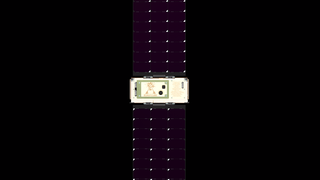




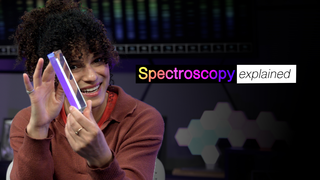

![2024 was an exciting year for astrophysics. There were fascinating discoveries by missions new and old, new instruments launched, and older instruments getting ready for unprecedented repairs in space. Several upcoming missions continued their march toward completion, with SPHEREx launching in 2025, the Nancy Grace Roman Space Telescope launching no later than May of 2027, and the Habitable Worlds Observatory beginning development as a next-generation space telescope. Building off the incredible successes, 2025 will be a great year for astrophysics at NASA.Credit: NASAMusic credit: “Extrapolations,” Andrii Yefymov [BMI], Universal Production MusicYouTubeComplete transcript available.](/vis/a010000/a014700/a014755/ASD_2024_highlight_STILL.jpg)




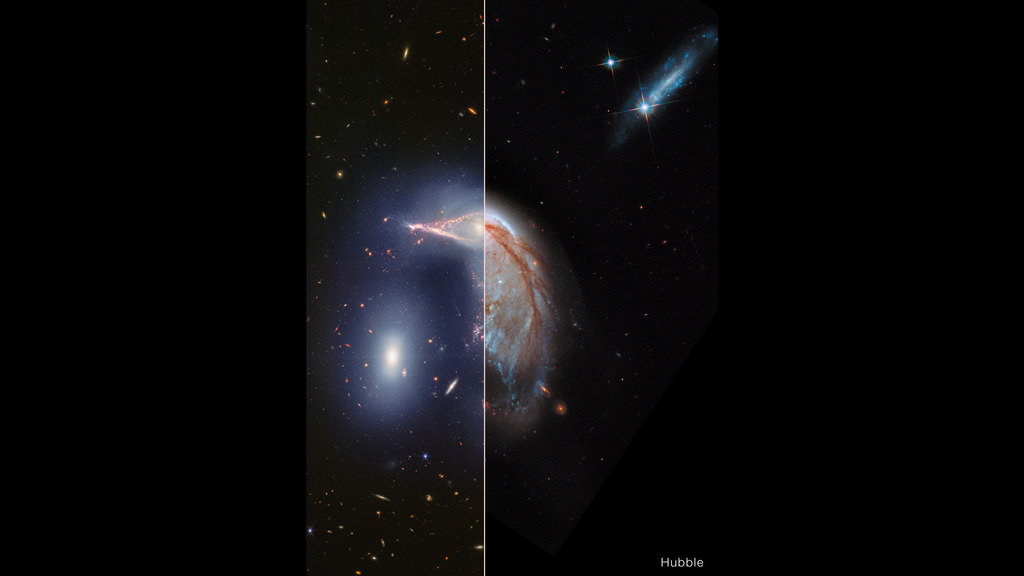






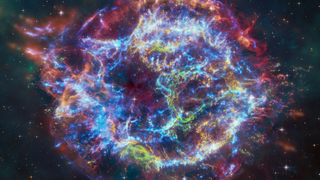




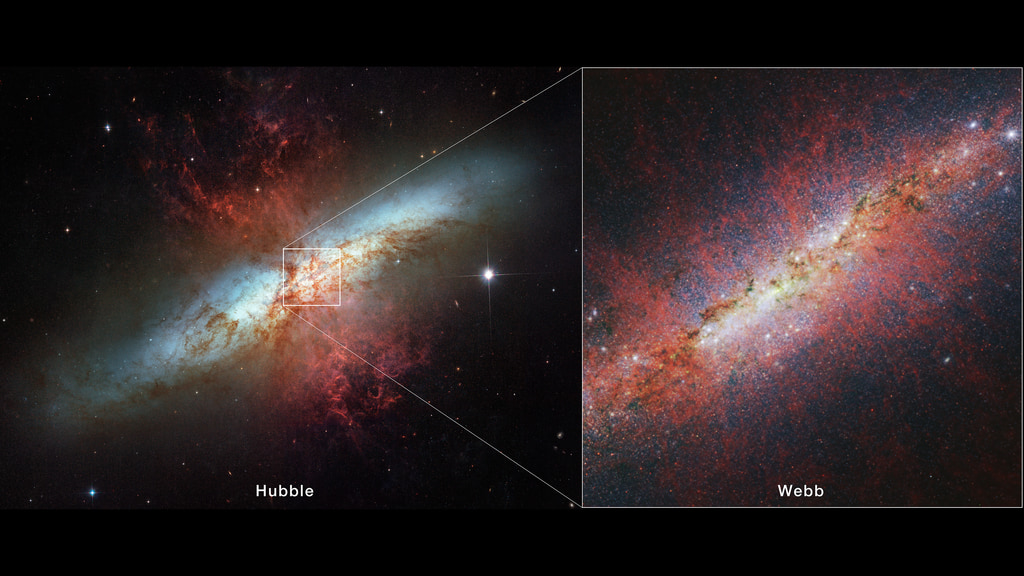

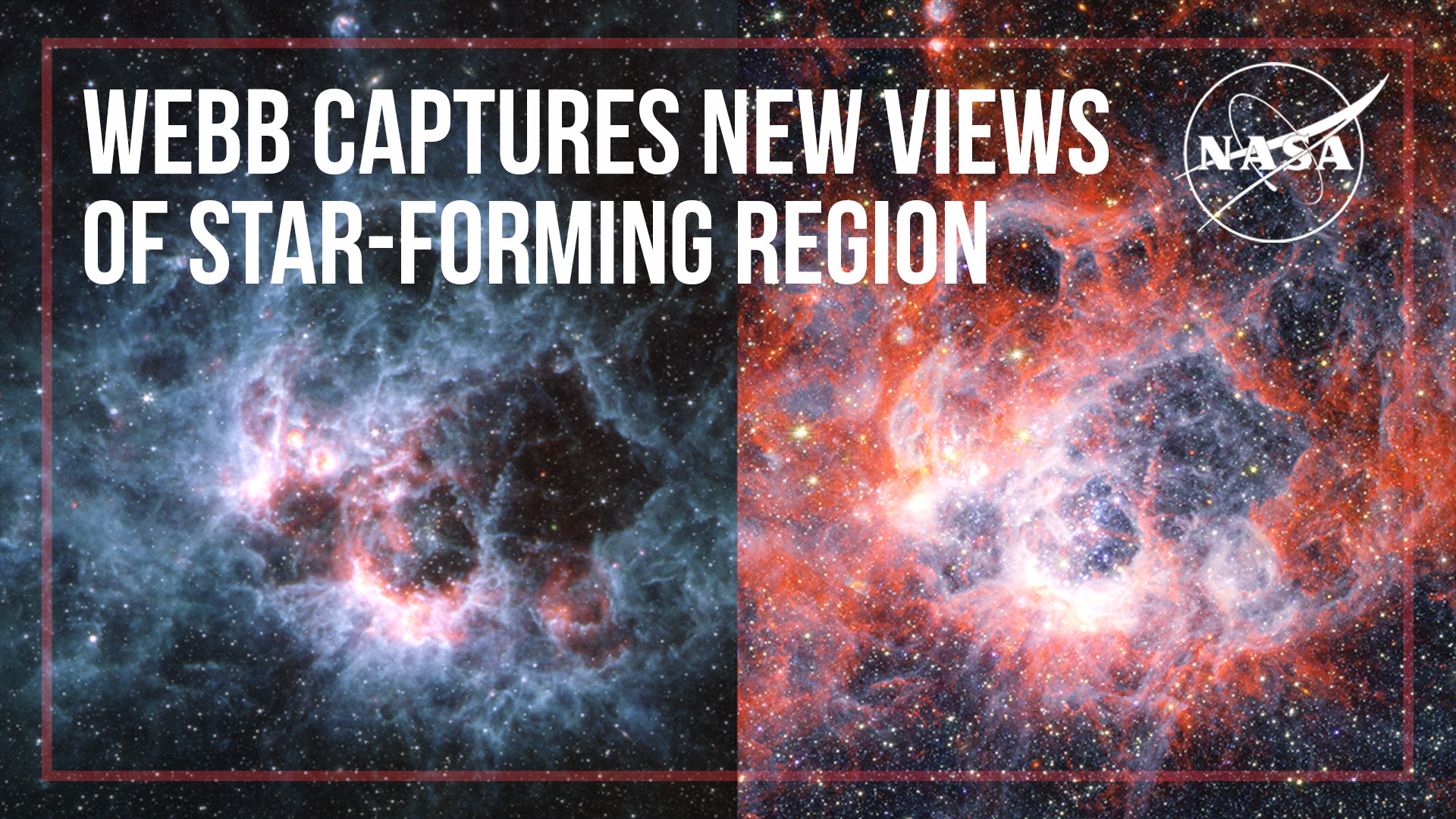



![Designing Webb FeatureAttention to Detail, (C) 2022, Model Music [PRS], Paul Richard O'Brien [PRS] Theo Maximilian Goble [PRS]Conceptual Scheme, (C) 2021, Koka Media [SACEM], Universal Production Music France [SACEM], Laurent Dury [SACEM]Moving Forward, (C) 2021, Atmosphere Music Ltd. [PRS], Mark Russell [PRS]Relentless Data, (C) 2020, Atmosphere Music Ltd. [PRS], Jay Price [PRS]Life Cycles, (C) 2016, Atmosphere Music Ltd. [PRS], Theo Golding [PRS]](/vis/a010000/a014100/a014185/Designing_Webb_Cover_Image_1.jpg)
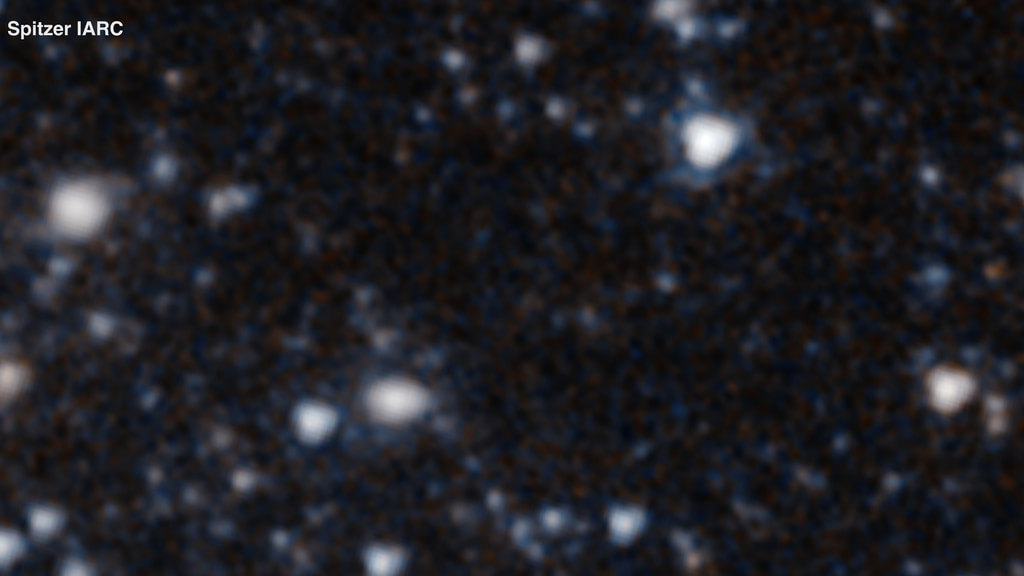
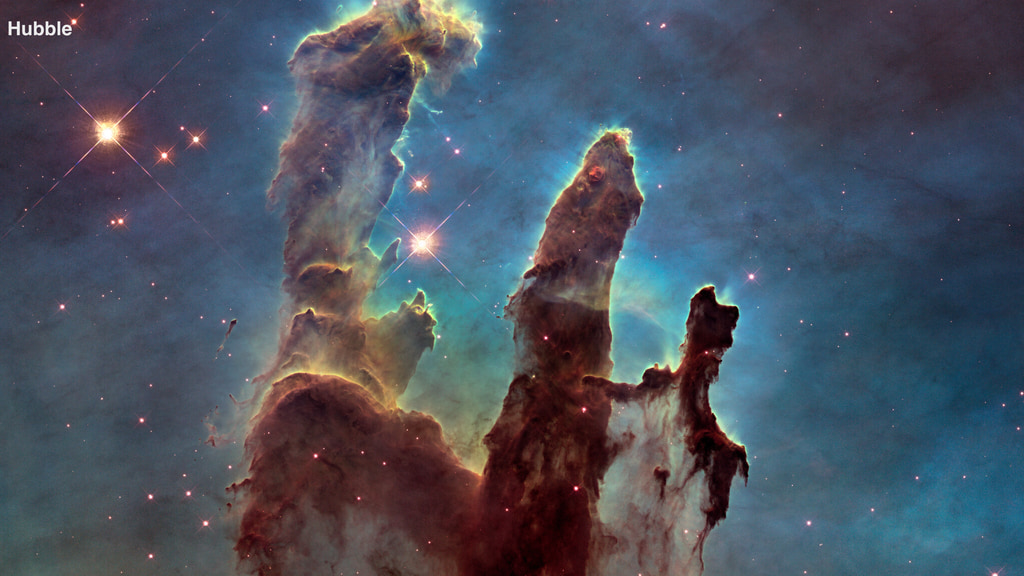



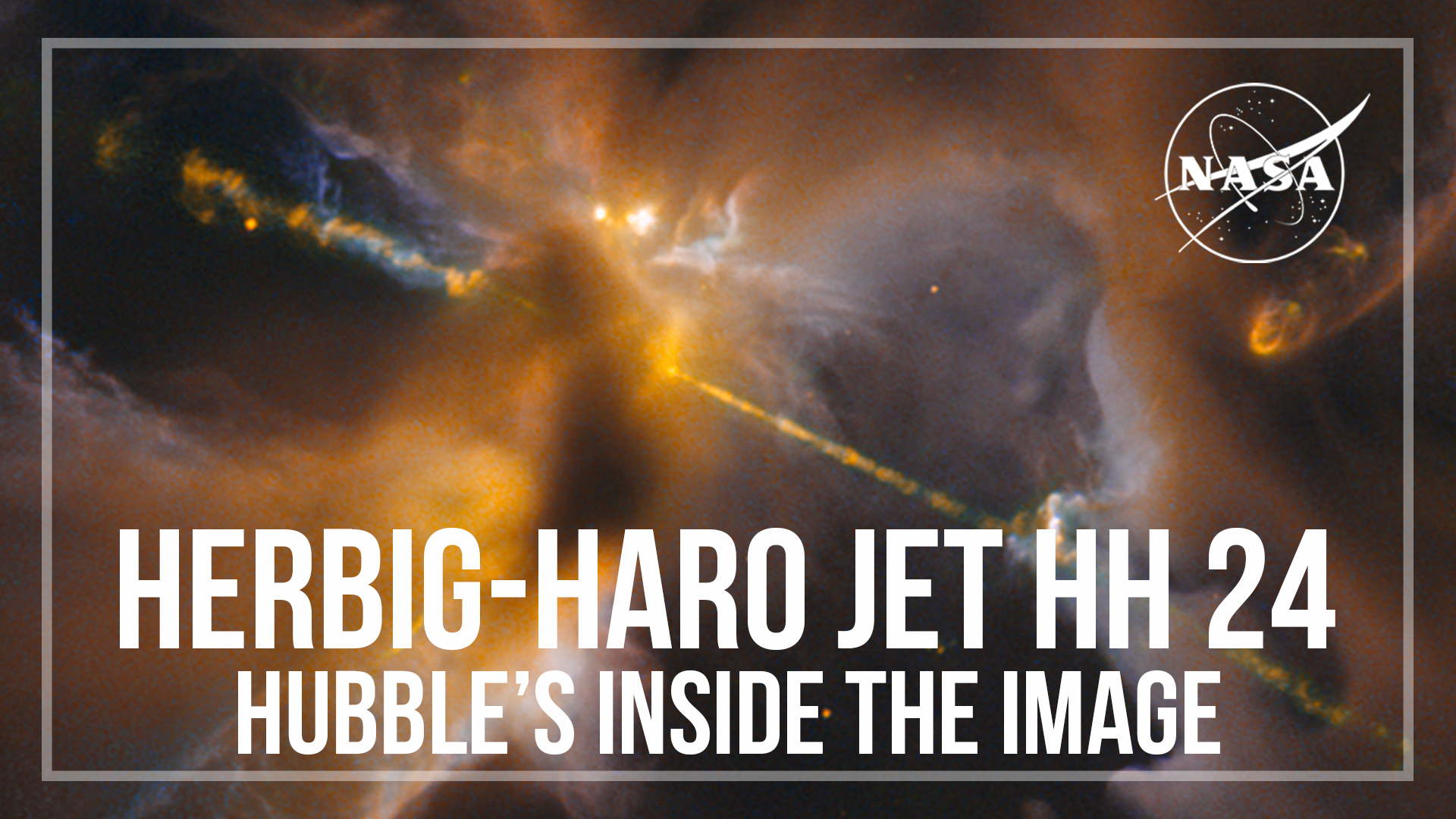








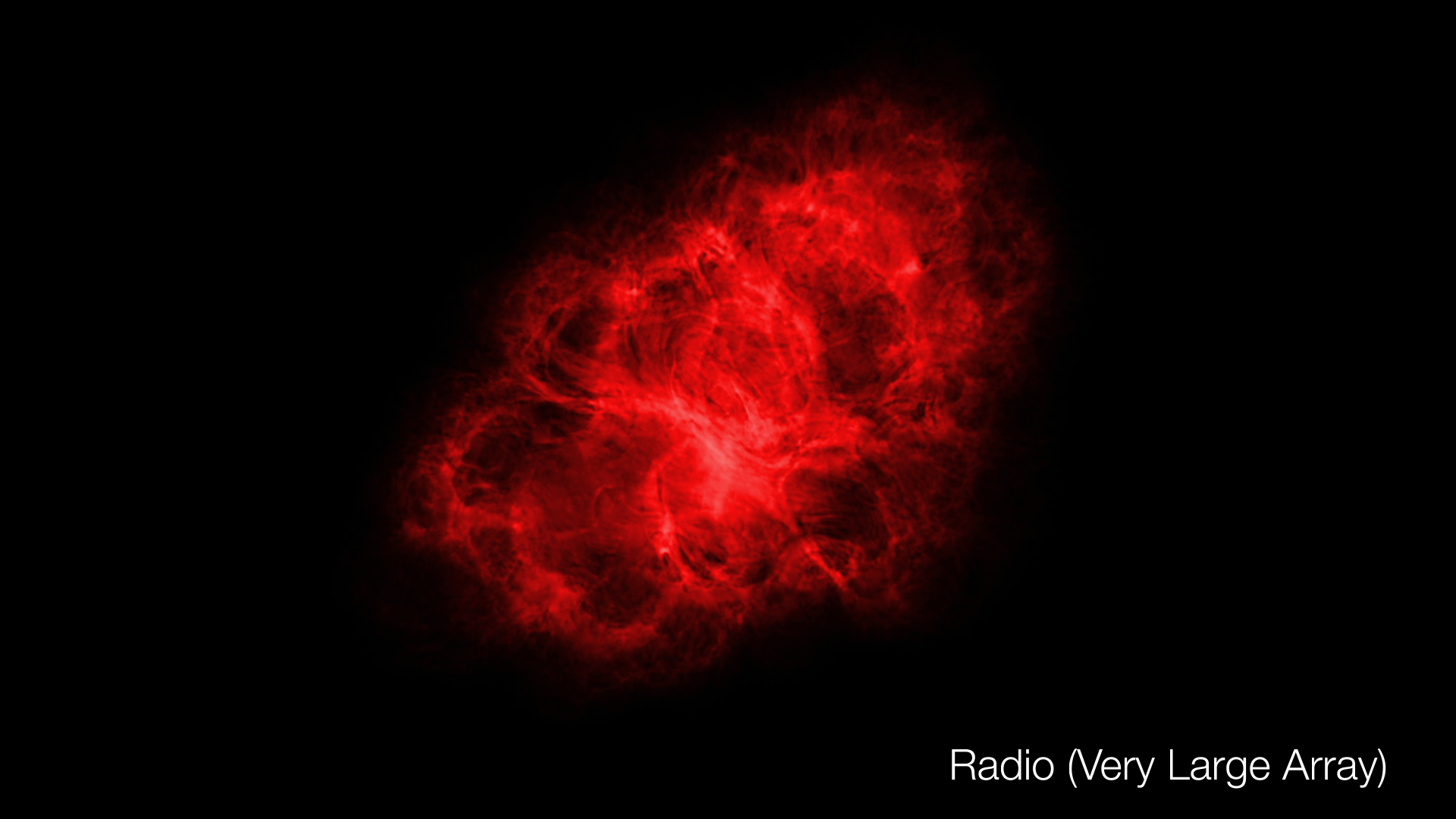





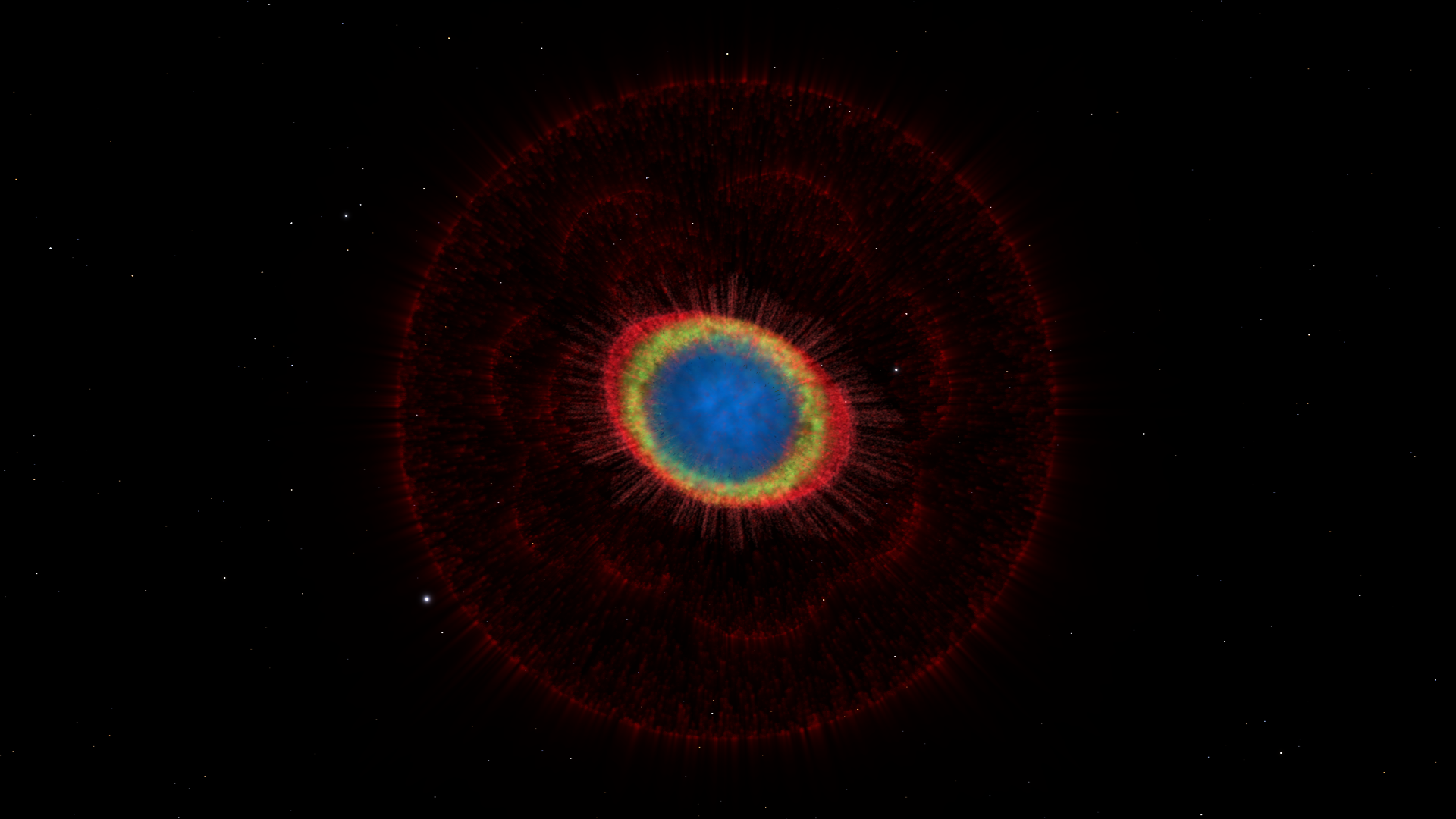





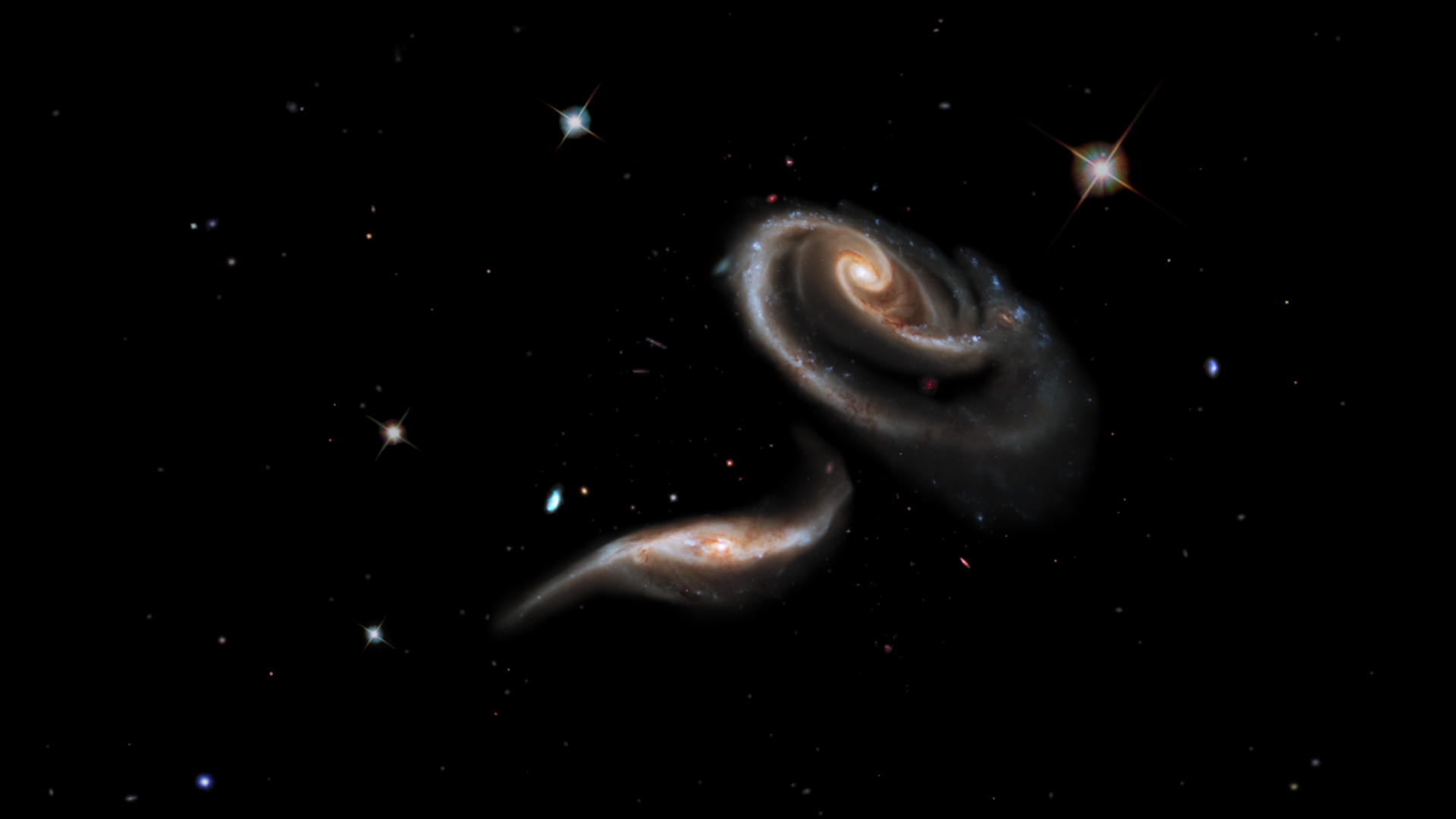












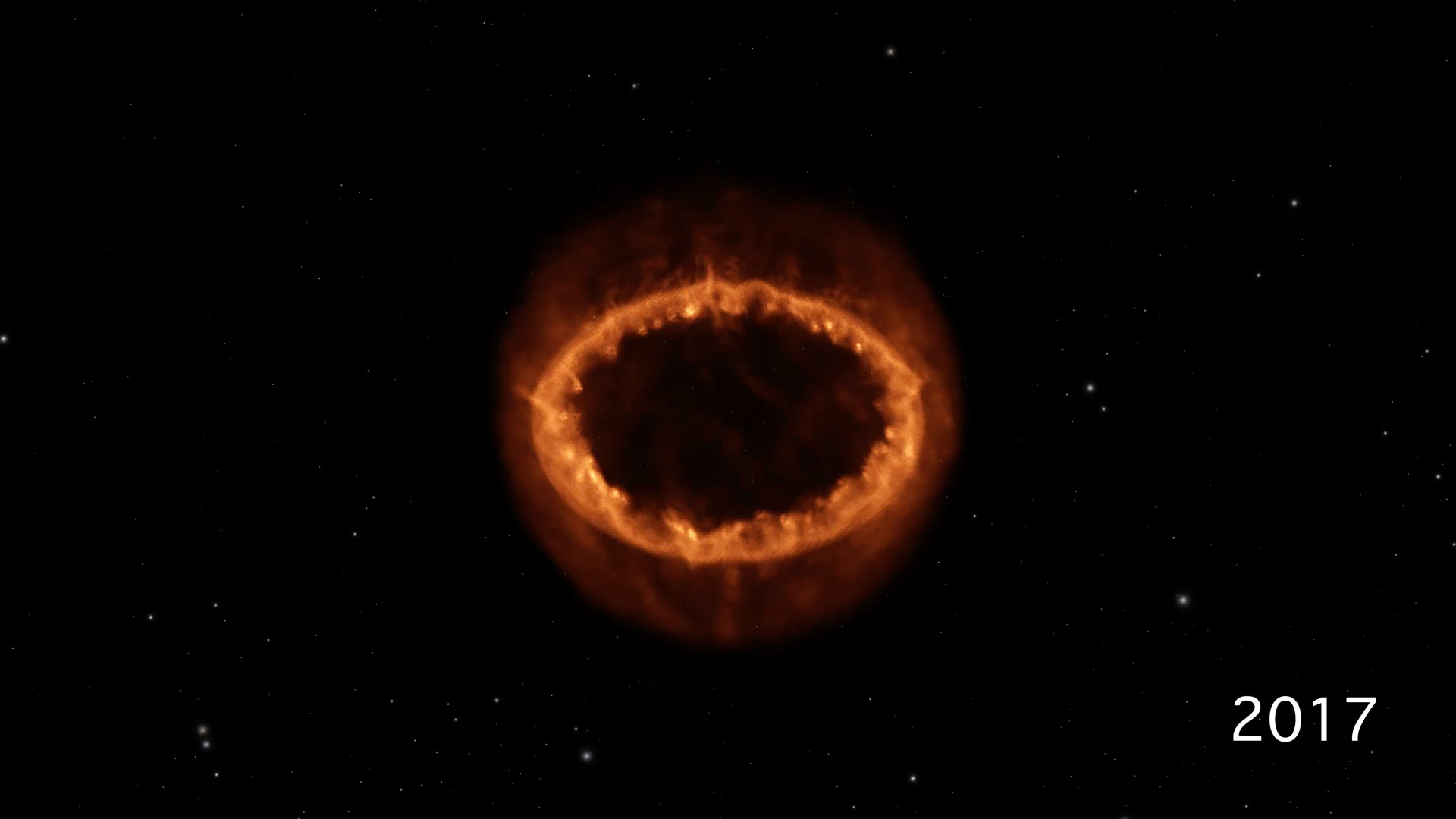


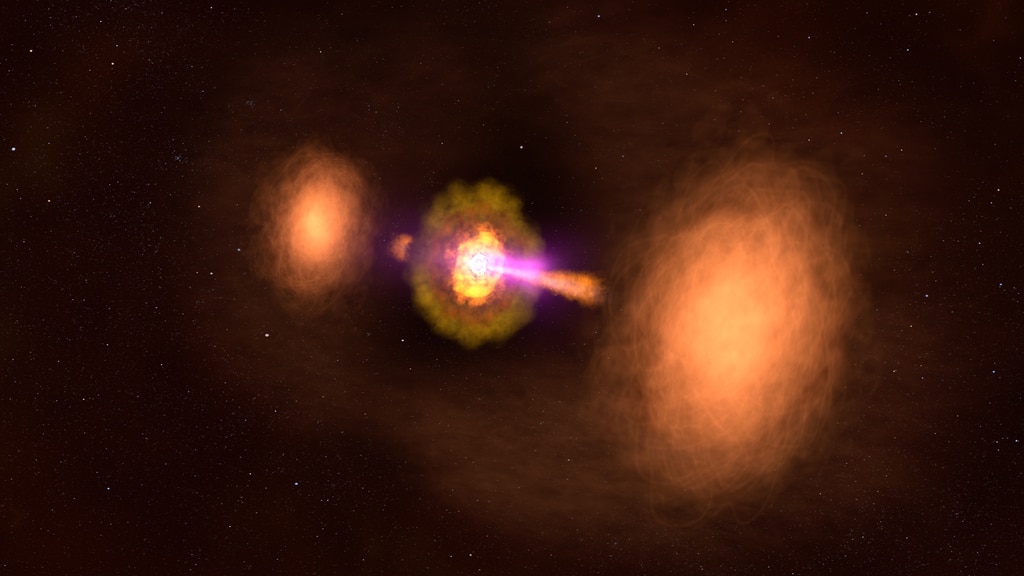













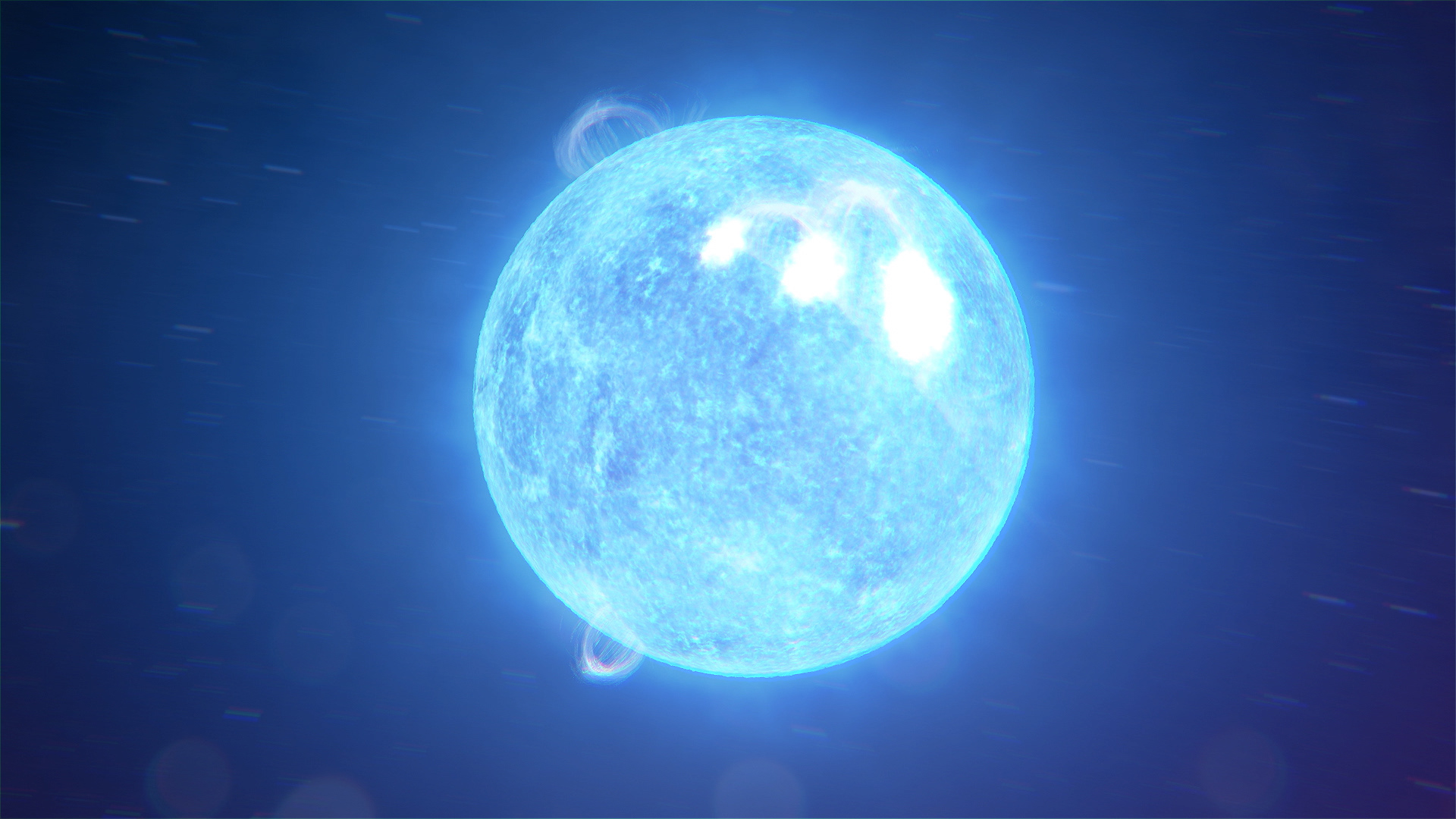







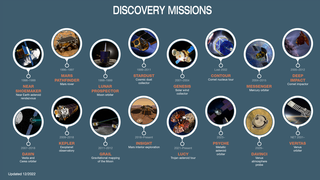









![In this flight toward a supermassive black hole, labels highlight many of the fascinating features produced by the effects of general relativity along the way. This supercomputer visualization tracks a camera as it approaches, briefly orbits, and then crosses the event horizon — the point of no return — of a supersized black hole similar in mass to the one at the center of our galaxy. Credit: NASA's Goddard Space Flight Center/J. Schnittman and B. PowellMusic: “Tidal Force,” Thomas Daniel Bellingham [PRS], Universal Production Music“Memories” from Digital Juice“Path Finder,” Eric Jacobsen [TONO] and Lorenzo Castellarin [BMI], Universal Production MusicWatch this video on the NASA Goddard YouTube channel.Complete transcript available.](/vis/a010000/a014500/a014576/14576_PageThumbnail_searchweb.png)
